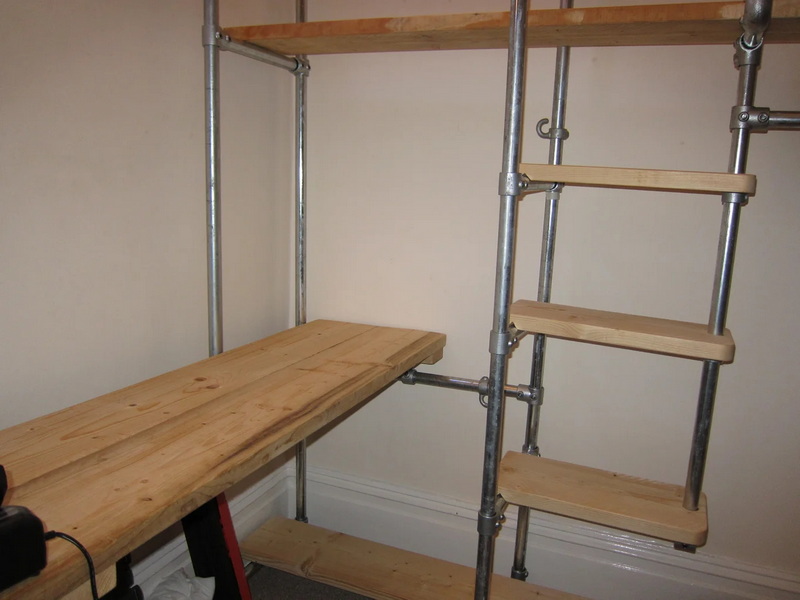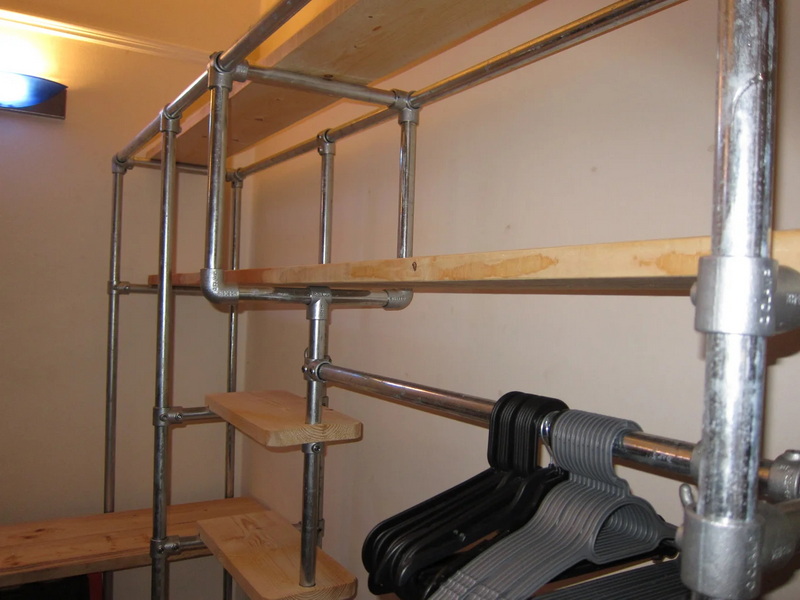Content Menu
● Understanding the Importance of a Scaffolding Storage System
● Factors to Consider When Choosing a Scaffolding Storage System
>> 1. Type of Scaffolding
>> 2. Volume of Equipment
>> 3. Available Space
>> 4. Environmental Conditions
>> 5. Portability Requirements
>> 6. Budget
>> 7. Safety and Accessibility
● Types of Scaffolding Storage Systems
>> 1. Scaffold Racks
>> 2. Scaffold Pallets
>> 3. Scaffold Baskets
>> 4. Tube Stackers
>> 5. Steel Fitting Bins
>> 6. Solid Steel Goods Carrying Cages
>> 7. Modular Pallets
● Best Practices for Scaffolding Storage
● Conclusion
● FAQ
>> 1. Why is proper scaffolding storage important?
>> 2. What factors should I consider when choosing a scaffolding storage system?
>> 3. What are some common types of scaffolding storage systems?
>> 4. How can I protect my scaffolding from rust and corrosion during storage?
>> 5. What are some best practices for maintaining a scaffolding storage system?
● Citations:
Scaffolding is an indispensable part of numerous construction, maintenance, and renovation projects. However, effectively managing and storing scaffolding equipment when it's not in use presents a significant challenge. Choosing the right scaffolding storage system is crucial for maintaining the integrity of your equipment, ensuring workplace safety, improving efficiency, and reducing costs. This article provides a detailed guide on how to select the best scaffolding storage system tailored to your specific needs.

Understanding the Importance of a Scaffolding Storage System
Before diving into the selection process, it's important to recognize why a dedicated scaffolding storage system is essential:
- Protection from Damage: Proper storage protects scaffolding components from weather, corrosion, and physical damage, extending their lifespan[9].
- Enhanced Safety: Organized storage reduces trip hazards and prevents accidents caused by loose or improperly stored equipment.
- Improved Efficiency: A well-organized storage system allows for quick and easy access to the right components, saving time and labor costs[4].
- Cost Reduction: By preventing damage and loss, proper storage reduces the need for frequent replacements, saving money in the long run.
- Space Optimization: Effective storage solutions maximize available space, especially important on crowded construction sites or in storage yards[4].
Factors to Consider When Choosing a Scaffolding Storage System
Selecting the best scaffolding storage system requires careful consideration of several factors:
1. Type of Scaffolding
The type of scaffolding you use will heavily influence your storage needs. Different scaffolding systems have unique components and storage requirements[1]:
- Tube and Clamp Scaffolding: Requires storage for tubes of varying lengths, couplers, and base plates[3].
- Frame Scaffolding: Needs storage for frames, cross braces, and planks[8].
- System Scaffolding (Ringlock, Cuplock, Kwikstage): Consists of modular components like standards, ledgers, and transoms[1].
- Specialty Scaffolding: Such as suspended or mobile scaffolding, may have unique storage needs.
2. Volume of Equipment
The amount of scaffolding equipment you need to store is a primary consideration. A small contractor with a limited inventory will have different needs than a large rental company.
3. Available Space
Assess the available space for your storage system. Consider both the ground area and vertical space.
4. Environmental Conditions
The storage environment plays a crucial role in protecting your scaffolding.
- Indoor vs. Outdoor Storage: Indoor storage provides better protection from the elements, while outdoor storage requires weather-resistant solutions.
- Climate: Consider the climate in your area. Humid environments can accelerate corrosion, requiring extra protection.
5. Portability Requirements
Do you need to move your scaffolding storage system frequently? If so, portability will be a key factor.
6. Budget
Determine your budget for a scaffolding storage system. Prices can vary widely depending on the type and complexity of the system.
7. Safety and Accessibility
Ensure that the storage system is designed for safe loading, unloading, and access to equipment.

Types of Scaffolding Storage Systems
Here are several types of scaffolding storage systems to consider:
1. Scaffold Racks
Scaffold racks are designed to hold longer scaffold components such as tubes, couplers, and planks[4]. They are available in various sizes and configurations to accommodate different types of scaffolding[5].
- Adjustable Scaffold Racks: These racks offer versatile storage solutions for any construction site or project[5]. The adjustable design allows you to customize the rack to fit your specific needs, ensuring that your equipment is securely and conveniently stored[5].
- Heavy-Duty Scaffold Racks: Constructed using high-quality materials to ensure durability and long-term performance, these racks are perfect for commercial use[5].
2. Scaffold Pallets
Scaffold pallets are compact storage units for difficult-to-stack scaffold that you can easily reposition with a forklift[8].
- Features: Fork loops for proper fork placement, anchor points for securing scaffold with straps, and expanded metal deck for sure footing[8].
- Benefits: Slash countless hours loading, unloading, and reloading. Safely store and transport scaffold frames and braces[8].
3. Scaffold Baskets
Scaffold baskets provide a safe and convenient way to store and transport scaffolding components and materials[4].
- Benefits: Reduce the risk of damage to scaffold components during transportation and storage, improve the overall efficiency of scaffold set-up and take-down, and maximize the space in projects or construction site[4].
4. Tube Stackers
Tube stackers are ideal for the safe storage of scaffolding tubes[2].
5. Steel Fitting Bins
Steel fitting bins are commonly bought alongside stillages for storing and transporting fixtures and fittings used such as couplers[2].
6. Solid Steel Goods Carrying Cages
Solid steel goods carrying cages are designed to safely lift and transport goods using cranes and forklifts across sites[2].
7. Modular Pallets
Scafom-rux offers modular pallets built from modular components, designed with flexibility and safety in mind[9]. These pallets are highly durable, ideal for transporting scaffolding materials such as scaffold tubes[9].
Best Practices for Scaffolding Storage
Regardless of the storage system you choose, follow these best practices for optimal results:
- Clean Equipment Before Storing: Remove dirt, debris, and excess moisture from scaffolding components before storing them[9].
- Inspect Regularly: Periodically inspect your scaffolding storage system and equipment for damage or wear.
- Maintain a Dry Environment: Store your scaffolding in a dry and sheltered area to prevent rust and corrosion[9].
- Organize by Type: Keep different types of scaffolding components separate for easy access.
- Label Components: Clearly label all components for quick identification.
- Use Inventory Management: Implement an inventory management system to track your scaffolding equipment and prevent loss.
Conclusion
Choosing the best scaffolding storage system for your equipment requires careful consideration of your specific needs, the type of scaffolding you use, the volume of equipment, available space, environmental conditions, and budget. By evaluating these factors and selecting the appropriate storage system, you can protect your investment, enhance safety, improve efficiency, and reduce costs. Implementing best practices for storage and maintenance will further extend the lifespan of your scaffolding equipment and ensure a safe and productive work environment.

FAQ
1. Why is proper scaffolding storage important?
Proper scaffolding storage protects equipment from damage, enhances safety, improves efficiency, reduces costs, and optimizes space.
2. What factors should I consider when choosing a scaffolding storage system?
Consider the type of scaffolding, volume of equipment, available space, environmental conditions, portability requirements, budget, and safety.
3. What are some common types of scaffolding storage systems?
Common types include scaffold racks, scaffold pallets, scaffold baskets, tube stackers, steel fitting bins, and solid steel goods carrying cages.
4. How can I protect my scaffolding from rust and corrosion during storage?
Store your scaffolding in a dry and sheltered area, and clean equipment before storing to remove dirt, debris, and excess moisture[9].
5. What are some best practices for maintaining a scaffolding storage system?
Inspect regularly, organize by type, label components, and use an inventory management system.
Citations:
[1] https://www.totalcontec.com/6-types-of-system-scaffolding-and-their-uses/
[2] https://hermeq.com/uk/en/scaffolding/scaffolding-storage.html
[3] https://aaitscaffold.com/scaffold-system/the-10-different-scaffold-system-types-used-in-construction/
[4] https://aaitscaffold.com/products/rack-and-baskets/
[5] https://scaffoldtype.com/scaffold-rack/
[6] https://www.scafom-rux.com/en/solutions/accessories/logistics-transportation
[7] https://www.bigrentz.com/blog/types-of-scaffolding
[8] https://starindustries.com/product/scaffold-pallet/
[9] https://www.scafom-rux.com/en/scaffolding-blog/best-practices-for-storing-scaffolding-material






















